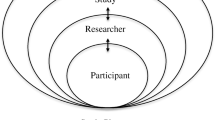Abstract
Participant attrition is a major influence on the effectiveness of evidence-based interventions. Assessing predictors of participant attrition and nurse and site characteristics associated with it could lay a foundation for increasing retention and engagement. We examined this issue in the national expansion of the Nurse-Family Partnership, an evidence-based program of prenatal and infancy home visiting for low-income, first-time mothers, their children, and families. Using a mixed methods approach, we examined participant, nurse, and site predictors of participant attrition and completed home visits. We used mixed multivariate regression models to identify participant, nurse, program, and site predictors of addressable attrition and completed home visits during pregnancy and the first year of the child’s life for 10,367 participants at 66 implementation sites. We then conducted semi-structured interviews with nurse home visitors and supervisors at selected sites with the highest (N = 5 sites) and lowest (N = 6 sites) rates of participant addressable attrition and employed qualitative methods to synthesize themes that emerged in nurses’ descriptions of the strategies they used to retain participants. Mothers who were younger, unmarried, African American, and visited by nurses who ceased employment had higher rates of attrition and fewer home visits. Hispanic mothers, those living with partners, and those employed at registration had lower rates of attrition. Those who were living with partners and employed had more home visits. Nurses in high retention sites adapted the program to their clients’ needs, were less directive, and more collaborative with them. Increasing nurses’ flexibility in adapting this structured, evidence-based program to families’ needs may increase participant retention and completed home visits.
Similar content being viewed by others
References
Ammerman, R. T., Stevens, J., Putnam, F. G., Altaye, M., Hulsmann, J. E., Lehmkuhl, H. D., & Van Ginkel, J. B. (2006). Predictors of early engagement in home visiting. Journal of Family Violence, 21, 105–115. doi:10.1007/s10896-005-9009-8.
Borkan, J. M. (2004). Mixed methods studies: A foundation for primary care research. Annals of Family Medicine, 2, 4–6. doi:10.1370/afm.111.
Durlak, J. A., & DuPre, E. P. (2008). Implementation matters: A review of research on the influence of implementation on program outcomes and the factors affecting the implementation. American Journal of Community Psychology, 4, 327–350. doi:10.1007/s10464-008-9165-0.
Haskins, R., Paxson, C., & Brooks-Gunn, J. (2009). Social science rising: A tale of evidence shaping public policy. Policy Brief. The Future of Children. Retrieved from http://ccf.tc.columbia.edu/pdf/560-%20Haskins%20Paxson%20Brooks-Gunn.pdf.
Ingoldsby, E. M., Olds, D., McClatchey, M., Baca, P., Lewis, J., Blackaby, T., Perhacs, M. (Under review). An intervention to improve participant retention in a home visitation program.
Katz, K. S., El-Mohandes, A. E., McNeely, J. D., Jarrett, M., Rose, A., & Cober, M. (2001). Retention of low income mothers in a parenting intervention study. Journal of Community Health, 26, 203–218. doi:10.1023/A:1010373113060.
Korfmacher, J., O’Brien, R., Hiatt, S., & Olds, D. (1999). Differences in program implementation between nurses and paraprofessionals providing home visits during pregnancy and infancy: A randomized trial. American Journal of Public Health, 89, 1847–1851. doi:10.2105/AJPH.89.12.1847.
National Research Council and Institute of Medicine. (2009). Preventing mental, emotional, and behavioral disorders among young people: Progress and possibilities. Committee on the Prevention of Mental Disorders and Substance Abuse Among Children, Youth, and Young Adults: Research Advances and Promising Interventions. O’Connell, M. E., Boat, T., & Warner, K. E. (Eds.), Board on Children, Youth, and Families, Division of Behavioral and Social Sciences and Education. Washington, DC: The National Academies Press. Retrieved from http://www.ncbi.nlm.nih.gov/books/NBK32775/pdf/TOC.pdf.
Olds, D. L. (2002). Prenatal and infancy home visiting by nurses: From randomized trials to community replication. Prevention Science, 3, 153–172. doi:10.1023/A:1019990432161.
Pearlin, L. I., & Schooler, C. (1978). The structure of coping. Journal of Health and Social Behavior, 19, 2–21. doi:10.2307/2136319.
Prinz, R. J., Smith, E. P., Dumas, J. E., Laughlin, J. E., White, D. W., & Barron, R. (2001). Recruitment and retention in prevention trials involving family-based interventions. American Journal of Preventive Medicine, 20, 31–37. doi:10.1016/S0749-3797(00)00217-3.
Roggman, L. A., Cook, G. A., Peterson, C. A., & Raikes, H. H. (2008). Who drops out of Early Head Start home visiting programs. Early Education and Development, 19, 574–599. doi:10.1080/10409280701681870.
Rollnick, S., Miller, W. R., & Butler, C. C. (2008). Motivational interviewing in health care. New York: Guilford.
Ware, J. E., Veit, C. T., & Donald, C. A. (1985). Refinements in the measurement of mental health for adults in the Health Insurance Study. Santa Monica, CA: RAND Corp.
Acknowledgments
This research was supported by funding from the Robert Wood Johnson Foundation (035369) and the David and Lucile Packard Foundation through the Harvard University Home Visiting Forum. EI’s contribution to this work was supported by an institutional NRSA postdoctoral research training program, 5 T32 MH015442.
Author information
Authors and Affiliations
Corresponding author
Additional information
Author Notes
None of the authors has a personal financial interest in the Nurse-Family Partnership (NFP). It should be noted that the Prevention Research Center for Family and Child Health, directed by David Olds at the University of Colorado School of Medicine, currently has a contract with the non-profit organization established to replicate the NFP in community practice (the Nurse-Family Partnership ©); this contract is to conduct research to improve the NFP program and its implementation. DL, MM, EI, and DO were employed by this center during the time that major aspects of this study were conducted. The majority of the work reported here was conducted through the National Center for Children, Families, and Communities at the University of Colorado College of Nursing prior to the creation of the national non-profit.
Rights and permissions
About this article
Cite this article
O’Brien, R.A., Moritz, P., Luckey, D.W. et al. Mixed Methods Analysis of Participant Attrition in the Nurse-Family Partnership. Prev Sci 13, 219–228 (2012). https://doi.org/10.1007/s11121-012-0287-0
Published:
Issue Date:
DOI: https://doi.org/10.1007/s11121-012-0287-0




